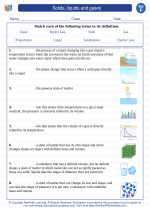Thermal Energy
Thermal energy is the energy that comes from heat. It is a form of kinetic energy, which is the energy of motion. When the particles in an object or substance move faster, they create more thermal energy.
How is Thermal Energy Transferred?
There are three main ways that thermal energy is transferred:
- Conduction: This is the transfer of thermal energy through direct contact between particles. For example, when you touch a hot pan, thermal energy is transferred from the pan to your hand through conduction.
- Convection: This is the transfer of thermal energy through the movement of fluids (liquids or gases). For example, when you boil water, the thermal energy is transferred through convection as the hot water rises and the cooler water sinks.
- Radiation: This is the transfer of thermal energy through electromagnetic waves. For example, the Sun transfers thermal energy to the Earth through radiation.
Units of Thermal Energy
The standard unit of measurement for thermal energy is the joule (J). However, in everyday use, other units such as calories or British Thermal Units (BTUs) may also be used to measure thermal energy.
Applications of Thermal Energy
Thermal energy has many practical applications in everyday life and industry. Some examples include:
- Heating buildings and homes
- Generating electricity in power plants
- Cooking food
- Running engines in vehicles
Study Guide
Here are some key points to remember about thermal energy:
- Define thermal energy and explain its relationship to heat.
- Describe the three main methods of thermal energy transfer: conduction, convection, and radiation.
- Identify the units used to measure thermal energy.
- Provide examples of everyday applications of thermal energy.
- Explain the concept of thermal equilibrium and how it relates to thermal energy transfer.
Understanding thermal energy is important for understanding how heat works and its impact on the world around us. Be sure to review these key points and practice applying them to different scenarios to solidify your understanding of thermal energy.
.◂Science Worksheets and Study Guides Sixth Grade. Solids, liquids and gases

 Activity Lesson
Activity Lesson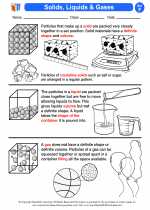
 Worksheet/Answer key
Worksheet/Answer key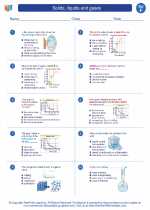
 Worksheet/Answer key
Worksheet/Answer key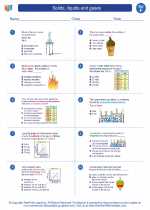
 Worksheet/Answer key
Worksheet/Answer key
 Vocabulary/Answer key
Vocabulary/Answer key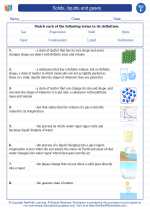
 Vocabulary/Answer key
Vocabulary/Answer key